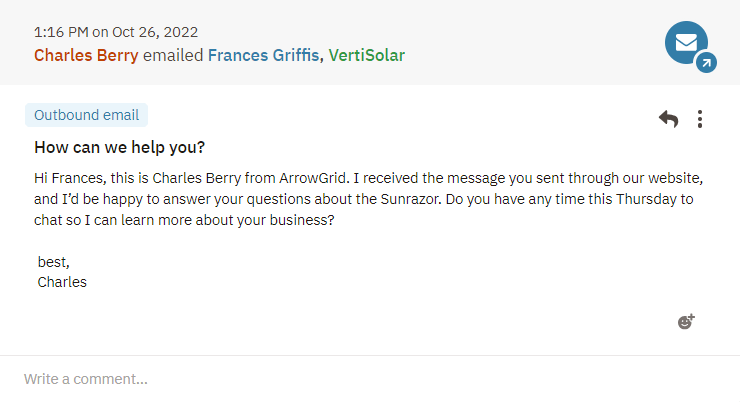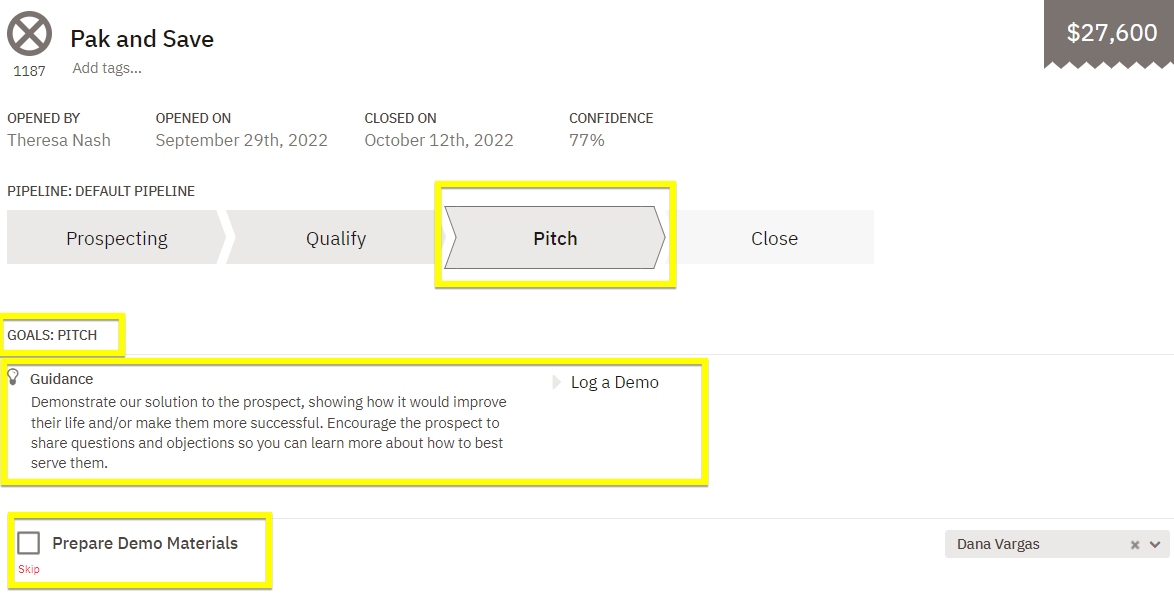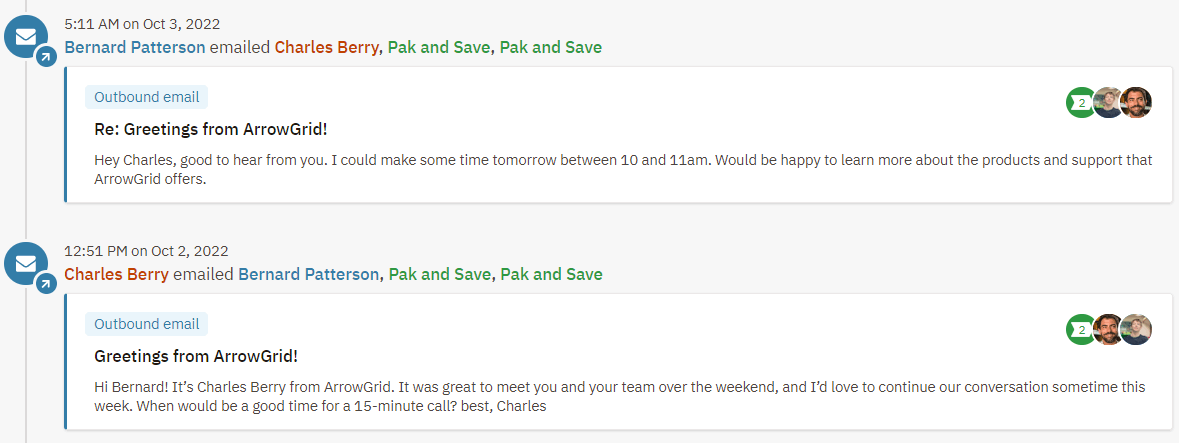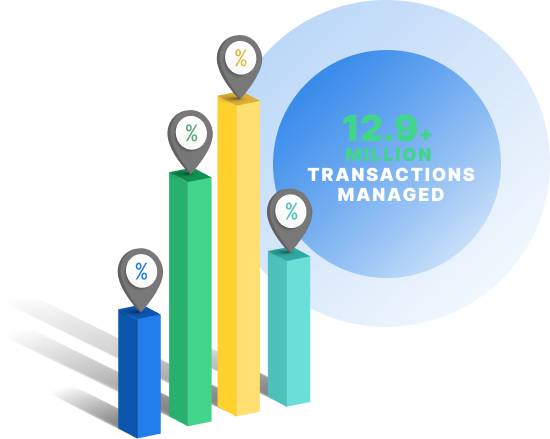-
 Published: Jul 17, 2023
Published: Jul 17, 2023
-
 9 min. read
9 min. read
-
 Sina Mchunu
Sina Mchunu Research & Tech Content Writer
Research & Tech Content Writer
- Sina is a marketing expert who specializes in SEO, AI, and digital marketing content. With over five years of experience, she’s written hundreds of pieces, spanning a variety of topics and industry niches. She loves combining her strong eye for detail and passion for storytelling in her work. You’ll find her fruit picking or horse riding at the local farm when she’s not writing.
Sales call mapping is the process of planning and structuring sales calls to enhance their efficacy. It entails doing a sales process analysis, locating the key decision-makers, ascertaining their requirements and pain points, and formulating a plan for each sales call.
Using a well-thought-out sales call mapping strategy, sales representatives can focus on promising clients, have meaningful discussions, and offer solutions that specifically solve their problems.
But how do you map a sales call correctly?
Let’s explore eight critical steps in the sales call mapping process:
- Identify your target market and the key decision-makers within it
- Research and gather information about the prospect’s business and pain points
- Develop a sales pitch that addresses the prospect’s specific needs
- Determine how you’ll address their possible objections or pushbacks
- Schedule a meeting with the prospect and prepare for the call
- During the call, focus on building rapport and understanding the prospect’s needs
- Present solutions that address their pain points and demonstrate the value
- Follow up with the prospect after the call to continue building a relationship
Let’s take a closer look!

Double Your Leads
without having to double your traffic. Learn how to increase your website conversion rate today!
Get My Free GuideStep 1: Identify your target market and the key decision-makers
Finding your target market and its key decision-makers should be your first step. This step entails researching and examining the sector you are targeting to find the companies or organizations that might profit from your product or service. You can do this by:
- Utilizing online research tools to gather information on prospects
- Participating in industry events and gatherings to network with people in the industry
- Analyzing market trends and identifying gaps in the market that your product or service can fill
- Referring to past sales data and customer feedback to refine your target market
Once you have identified your target market, you must determine the key decision-makers within your target businesses so that you may adjust your sales pitch to suit their particular requirements and preferences. You can use the following resources to identify the company’s key decision-makers:
- Looking at the company’s organizational chart
- Researching on LinkedIn or other professional networking sites
- Reaching out to industry associations or trade shows for information
By conducting this research in advance, you can modify your sales pitch to speak to those decision-makers’ particular demands and pain areas — which brings us to the next step!
Step 2: Research and gather information about the prospect’s business and pain points
The next stage is to undertake in-depth research on the companies and pain points of the decision-makers you want to reach. Doing so lets you better understand their unique demands and difficulties and modify your sales pitch appropriately.
Making a sales discovery call is one efficient approach to getting this data.

On this call, you can ask open-ended questions to gain insight into their operations, difficulties, and goals. You can also use internet resources such as:
- The company’s website
- Media publications
- Social media profiles
- Industry reports
You’ll be able to show how your product or service addresses their particular pain points and presents a solution to their problems by taking the time to get this information. This approach will raise the possibility of turning them into fresh business leads.
Questions to Ask On a Sales Discover Call
Step 3: Develop a sales pitch that addresses the prospect’s specific needs
After you have sufficient data on your prospective clients, it is time to develop a sales pitch that addresses their particular problems. Prospects are far more likely to become clients if you customize your sales pitch and demonstrate that you are attentive to their demands.

You should customize your sales pitch to their requirements and present a resolution that solves their problems. You can employ the following approach to create your pitch properly:
- Highlight your offering’s benefits and how it can solve their problems.
- Avoid using industrial jargon that can confuse or alienate them and instead use language that connects with them.
- Provide social proof, such as customer testimonials or case studies, to build credibility and trust.
- Listen actively to their concerns and objections, and address them clearly and empathetically.
These practices will help you create a persuasive sales pitch that matches your target market and boost conversions.
Step 4: Determine how you’ll address their possible objections or pushbacks
Once you’ve crafted a compelling sales pitch, start anticipating any objections or pushbacks they may have. You can quickly respond to their worries and dispel their reluctance about purchasing if you have done your homework in advance.
To prepare for pushbacks, ask yourself the following questions:
- What are some typical rebuttals or arguments that your intended audience could raise?
- Are there any myths or misconceptions about your offering you may need to debunk?
- What if they are concerned about the price or they have doubts about the quality or effectiveness of your offering?
Create a strategy for overcoming these possible obstacles in your sales pitch once you’ve recognized them. By doing this, you can avoid surprises and maintain your reputation as a knowledgeable and dependable seller. Your strategy can include the following:
- Providing additional information
- Addressing concerns about pricing or value
- Offering a guarantee or trial period to ease any doubts they may have
The trick is to be optimistic and keep your attention on the benefits of your offering. Doing this can improve your chances of making the sale and forming enduring bonds with your clients.
Step 5: Schedule a meeting with the prospect and prepare for the call
Once you have a plan to deal with any pushbacks and objections, you can arrange a meeting.

Depending on the nature of your product or service, This meeting can be via:
- A phone conversation
- A video conference
- An in-person encounter
You’ve done your homework, and you are prepared to dazzle your prospect with the unique features of your service. Remember that the meeting is an opportunity to connect with the customer as much as make a sale. Prepare a concise agenda for the call and be prepared with any essential documents, including product demos or case studies.
With proper preparation and a client-centered approach, you can make this encounter a worthwhile chance to build rapport and showcase your knowledge. You can improve your chances of completing the deal and building a lasting relationship with the prospect by being well-prepared and projecting confidence.
Step 6: During the call, focus on building rapport and understanding the prospect’s needs
Once the conversation has started, building rapport with the potential customer is critical. Begin by introducing yourself and expressing gratitude for their time. After that, inquire about their company and bring up recent challenges they raised during your sales discovery call.
During this phase, active listening is essential since it enables you to address their requirements and problems when it’s your moment to make your pitch. Take notes and ask pertinent questions while you listen to show that you are paying attention and are knowledgeable. Doing so will endear you to them and position you as a dependable collaborator invested in their prosperity.
Keep the conversation polite and professional, and refrain from employing forceful or aggressive sales methods. You’ll have a better chance of sealing the transaction and gaining the prospect’s business in the long run if you establish trust and show that you genuinely care about their success.
Step 7: Present solutions that address their pain points and demonstrate the value
The moment has come to answer their problems once you have gained their trust and proven that you comprehend their wants. To convince them of the worth of your offering, be sure to tailor your answers to meet their unique demands. Demonstrate to them how your solution can assist them in achieving their objectives and resolving their difficulties.
Be open and honest about your solution’s limitations and advantages, and don’t be hesitant to get feedback or address any concerns they may have. You can increase your credibility and forge closer ties with potential clients.
Use real-life examples and case studies to show how your solution has helped others. To allow your prospects to experience the advantages of your product or service firsthand, you can also give a free trial or demo.
Remember not to force them to buy your product or service — help them make an informed decision to benefit their business.
Step 8: Follow up with the prospect after the call to continue building a relationship
Following up with the prospect is crucial to demonstrate your continued interest in working with them and forging a relationship beyond the conversation. Send a personalized email thanking them for their time and summarizing the key points of the call.
You can also add any more details or resources you believe they would find helpful. In the follow-up email, address any issues or queries they brought up during the conversation to demonstrate that you were attentive and considerate of their requirements.
Keep the discussion on their company objectives and how your product or service can assist them in achieving those objectives.
Time to Level Up Your Sales
Our long list of services helps you grow every aspect of your business with marketing strategies that are proven to increase bottom-line metrics like revenue and conversions.
In the past 5 years, we’ve managed more than 14.9 MILLION transactions across our client base.

Streamline sales call mapping with MarketingCloudFX + Nutshell
With MarketingCloudFX + Nutshell, your sales team can map out their sales calls and ensure they maximize their time and resources. MarketingCloudFX’s advanced tracking capabilities allow teams to identify the most productive conversations, the most enthusiastic clients, and the parts of their sales pitch that require work.
Nutshell offers a comprehensive perspective of all sales activities by giving your team a visual overview of their sales funnel and enabling them to allocate their resources based on data. These technologies work together to allow sales teams to stay on top of their game and close more sales.
Contact us online or call 888-601-5359 to learn how our technology streamlines their sales operations.
-
 Sina is a marketing expert who specializes in SEO, AI, and digital marketing content. With over five years of experience, she’s written hundreds of pieces, spanning a variety of topics and industry niches. She loves combining her strong eye for detail and passion for storytelling in her work. You’ll find her fruit picking or horse riding at the local farm when she’s not writing.
Sina is a marketing expert who specializes in SEO, AI, and digital marketing content. With over five years of experience, she’s written hundreds of pieces, spanning a variety of topics and industry niches. She loves combining her strong eye for detail and passion for storytelling in her work. You’ll find her fruit picking or horse riding at the local farm when she’s not writing. -

WebFX is a full-service marketing agency with 1,100+ client reviews and a 4.9-star rating on Clutch! Find out how our expert team and revenue-accelerating tech can drive results for you! Learn more
Try our free Marketing Calculator
Craft a tailored online marketing strategy! Utilize our free Internet marketing calculator for a custom plan based on your location, reach, timeframe, and budget.
Plan Your Marketing Budget
Table of Contents
- Step 1: Identify Your Target Market and the Key Decision-makers
- Step 2: Research and Gather Information About the Prospect’s Business and Pain Points
- Step 3: Develop a Sales Pitch That Addresses the Prospect’s Specific Needs
- Step 4: Determine How You’ll Address Their Possible Objections or Pushbacks
- Step 5: Schedule a Meeting with the Prospect and Prepare for the Call
- Step 6: During the Call, Focus on Building Rapport and Understanding the Prospect’s Needs
- Step 7: Present Solutions That Address Their Pain Points and Demonstrate the Value
- Step 8: Follow Up with the Prospect After the Call to Continue Building a Relationship
- Streamline Sales Call Mapping with MarketingCloudFX + Nutshell

Maximize Your Marketing ROI
Claim your free eBook packed with proven strategies to boost your marketing efforts.
Get the GuideTry our free Marketing Calculator
Craft a tailored online marketing strategy! Utilize our free Internet marketing calculator for a custom plan based on your location, reach, timeframe, and budget.
Plan Your Marketing Budget





